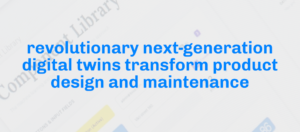In the ever-evolving landscape of industrial manufacturing, the significance of data cannot be overstated. As technology continues to advance, embracing a data-centric approach can unlock a myriad of opportunities for companies. In this blog post, we will explore the types of data industrial manufacturing companies currently possess, shed light on what data they should consider collecting, and discuss how the integration of this data into a digital twin can lead to financial benefits, sustainability gains, and enhanced competitiveness.
Understanding the Current Data Landscape: What Industrial Manufacturers Have
Industrial manufacturing companies already generate and accumulate vast amounts of data throughout their processes. This data includes:
- Production Data:
- Information on production rates, machine performance, and output quality.
- Supply Chain Data:
- Details about raw material procurement, inventory levels, and logistics.
- Maintenance Data:
- Records of machine maintenance schedules, downtime, and historical performance.
- Quality Control Data:
- Data related to product quality, defect rates, and adherence to quality standards.
- Energy Consumption Data:
- Information on energy usage during production processes.
Identifying Data Gaps: What Industrial Manufacturers Should Start Collecting
While manufacturers possess substantial data, there are areas where collecting additional data can bring valuable insights and improve overall operations:
- Predictive Maintenance Data:
- Gathering real-time data on machine health and performance for more accurate predictive maintenance scheduling.
- Environmental Impact Data:
- Tracking and analyzing the environmental footprint of manufacturing processes to identify areas for improvement.
- Customer Feedback Data:
- Collecting and analyzing customer feedback to inform product development and enhance customer satisfaction.
- Market Demand Data:
- Utilizing market trends and demand forecasting data to optimize production schedules and inventory management.
The Power of Integration: How Digital Twins Bring it All Together
Enter the era of digital twins – virtual replicas of physical assets or processes. By integrating existing and newly collected data into a digital twin framework, industrial manufacturers can achieve the following:
- Real-time Monitoring and Analysis:
- Digital twins enable continuous monitoring of machinery, production lines, and overall operations, providing real-time insights into performance.
- Predictive Analytics:
- By leveraging historical and real-time data, digital twins can predict maintenance needs, reducing downtime and extending the lifespan of equipment.
- Customization and Innovation:
- Understanding customer preferences through data allows for product customization, fostering innovation and meeting market demands effectively.
- Sustainability Optimization:
- Analyzing environmental impact data within a digital twin framework helps identify areas for sustainability improvements, aligning with green initiatives.
Financial Benefits, Sustainability Gains, and Competitiveness
The integration of data into a digital twin brings tangible advantages:
- Cost Reduction:
- Predictive maintenance and optimized production schedules lead to cost savings through reduced downtime and efficient resource utilization.
- Increased Sustainability:
- By identifying and mitigating environmental impacts, companies can enhance their sustainability profile, meeting the demands of eco-conscious consumers and regulatory standards.
- Competitive Edge:
- A data-driven approach fosters innovation, enhances product quality, and positions companies as leaders in the competitive manufacturing landscape.
A Data-Driven Future Awaits
Industrial manufacturing companies stand at the cusp of a data-driven revolution. Embracing the power of digital twins and expanding data collection practices can pave the way for financial prosperity, sustainable operations, and heightened competitiveness. It’s time to harness the potential of data for a brighter and more efficient future in industrial manufacturing.
Check also this related nBlog: Rethinking in the Age of Digital Twins




